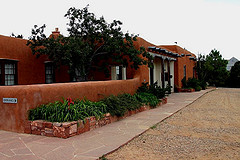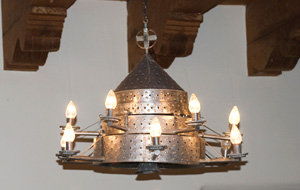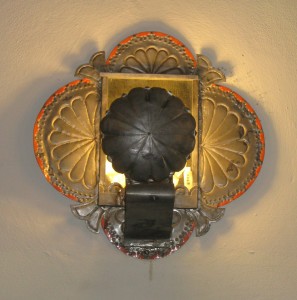I have a confession. I’m not a “museum person.” Maybe it’s the thought of long lines, stern guards and dry descriptions that turns me off. Or maybe it’s a therapist-worthy flashback from one tragically awkward middle school field trip (don’t ask). So it was with some trepidation that I finally decided to experience what friends have been raving about for years – the Museum of Spanish Colonial Art at Santa Fe’s famous Museum Hill.
Step one: Get museum-ready. In preparation I called upon the most powerful energy vortex in Santa Fe: a double Americano from Ohori’s (oh, sweet nectar of the gods.) Reusable cup in hand, I drove on, pumping a steady dose of Adele powerfully through the stereo. It was a particularly clear Santa Fe day, and I was briefly tempted to detour and stroll the Santa Fe Railyard. But, caffeinated and inspired, I stayed the course.

Museums of Spanish Colonial Art
Winding through the tranquil and scenic foothills, driving to the Museum of Spanish Colonial Art didn't feel like going to a museum at all. My short route took me just minutes from the Plaza through the lavender-dotted hills that evoked a Santa Fe watercolor. A quick glance at my GPS confirmed that the museum was in fact the charming adobe hacienda hidden behind piñon trees in the distance. This might not be so bad after all.
I bravely walked the rustic flagstone path to the museum’s entrance. It felt so much like approaching someone’s front door I nearly paused to knock. Once inside the museum, I immediately felt the unmistakable, warm Santa Fe vibe my friends had been talking about. Crooked halls connected a trove of charming rooms the likes of which you’d linger in with friends over a glass of wine (note to self: Dragon Room, it’s been too long.) No vaulted ceilings, pretentious architecture, grand staircases, marble pillars, or silver-haired “shush-ers” here. This was my kind of museum.
The featured exhibit was: CCC Furniture and Tinwork from the Great Depression. The CCC? My heart swelled. My grandfather had proudly served in the CCC–the Civilian Conservation Corps, and shared with great pride the stories and weathered photographs of the bridge he helped build near Bandelier National Monument.
At the museum I learned that in New Mexico FDR’s New Deal allowed local artists and craftsmen to create some of our state’s most exquisite artworks. Actually, some of the murals done for the program can still be viewed on walking tours through downtown Santa Fe. Yet as breathtaking as the artistry and skill of the CCC artists was, their work had never before been exhibited. I felt proud to be part of this inaugural exhibit. And to my surprise I felt right at home surround by the past.
Completing the exhibit, I envisioned impressing the girls at wine club by unleashing my inner Martha Stewart. “The exquisite antique furniture was constructed using traditional European techniques handed down by early colonists, but CCC workers also incorporated designs and animal motifs from Pueblo Indian pottery,” I would tell them. Then, after an appropriate pause, “It’s impossible to know which CCC workers are responsible for each piece, but the traditions preserved by the CCC projects are some of the most recognizable in New Mexico.”
The story of how tin working became a tradition is told across the hall from the CCC exhibit. But that’s a whole other, equally enchanting, story I’ll save for another time.
The good news for longtime and temporary Santa Feans: The Museum of Spanish Colonial Art tells our story beyond just “museum-style” names and dates. In just minutes you can journey to Santa Fe’s artistic heritage. Take it from me, you’ll feel the true spirit of Santa Fe... even if you’re not a museum person.
Check out the exhibit at the Museum of Spanish Colonial Art
Want to discover more New Deal Art in Santa Fe? Experience the New Deal Art Legacy Walking Tour











